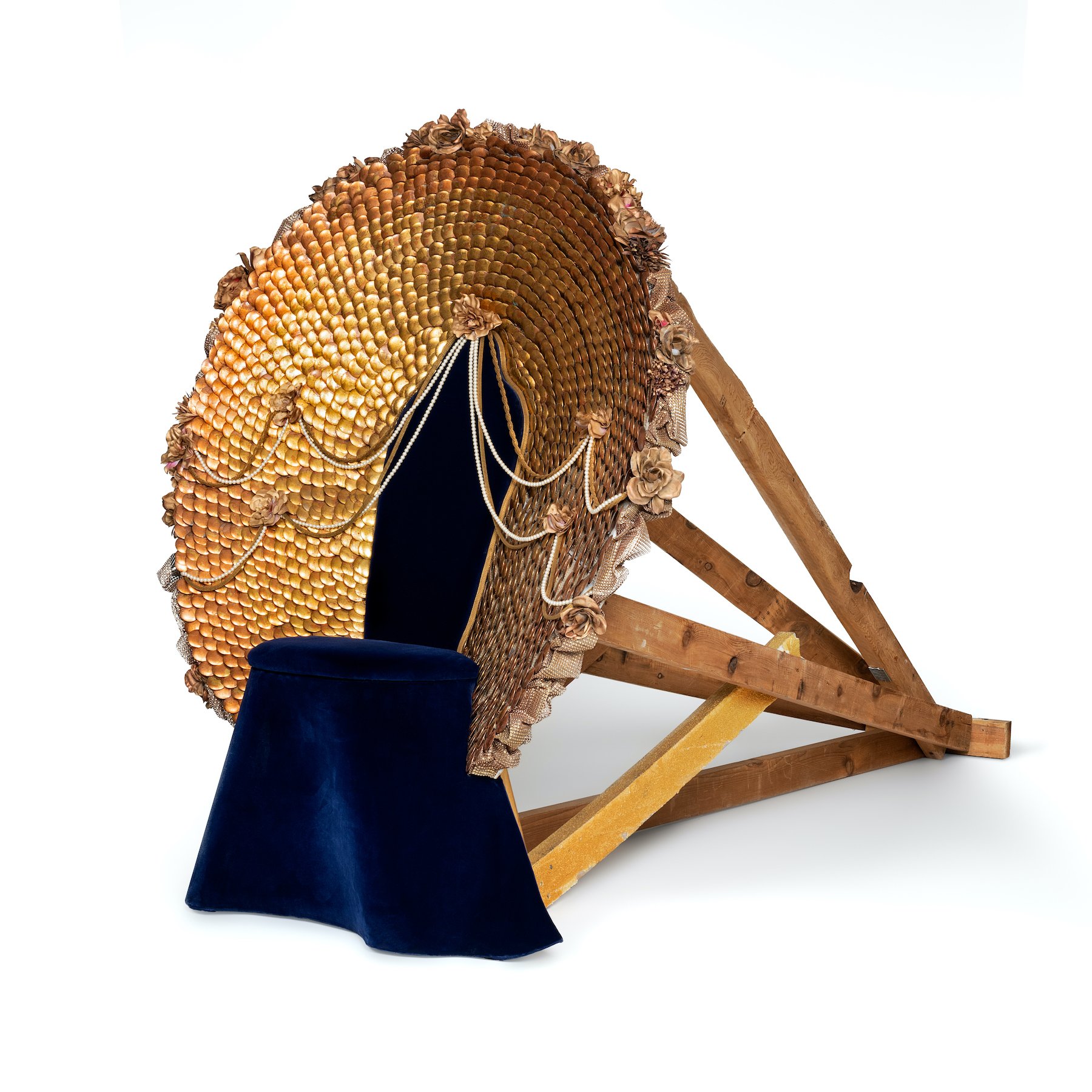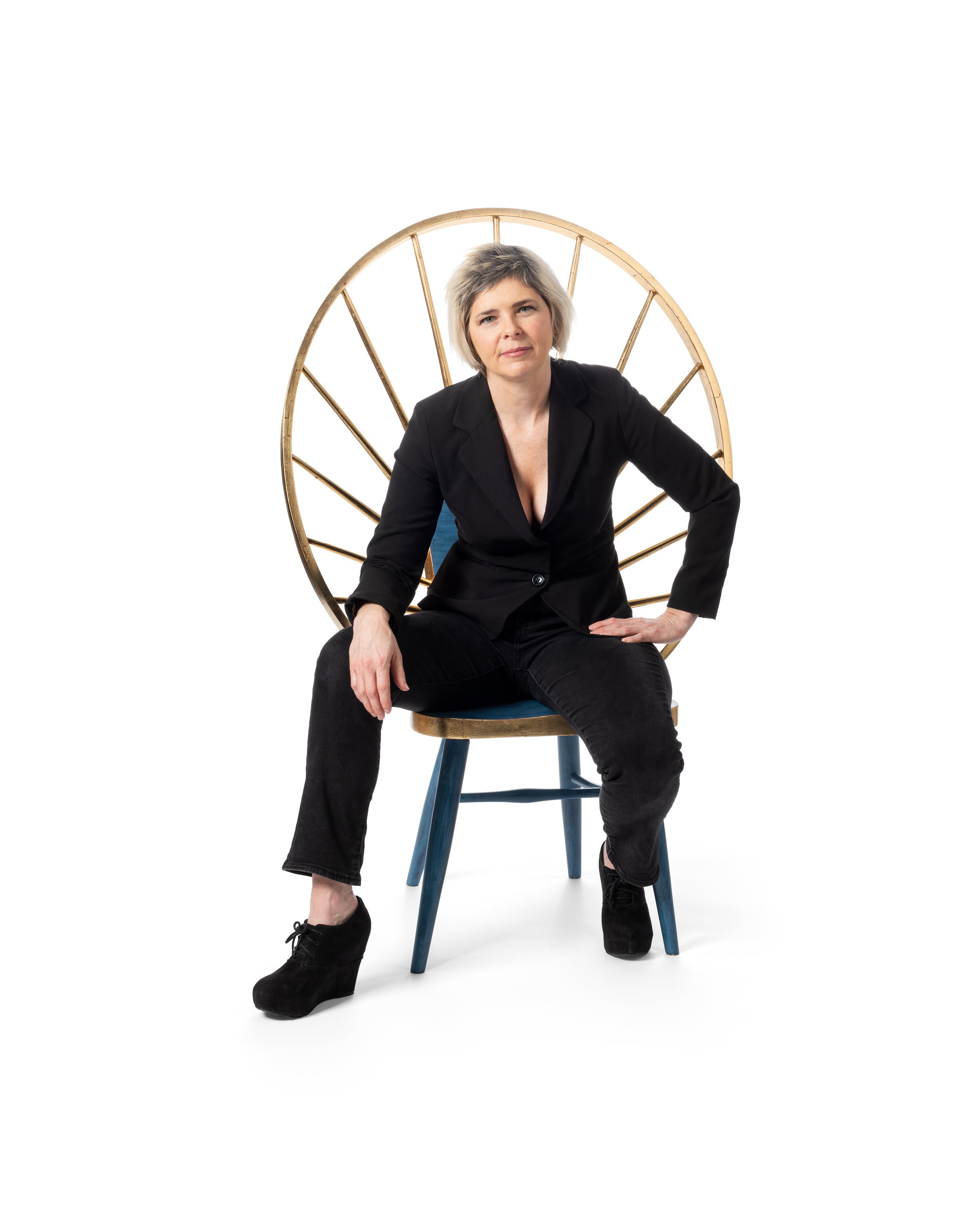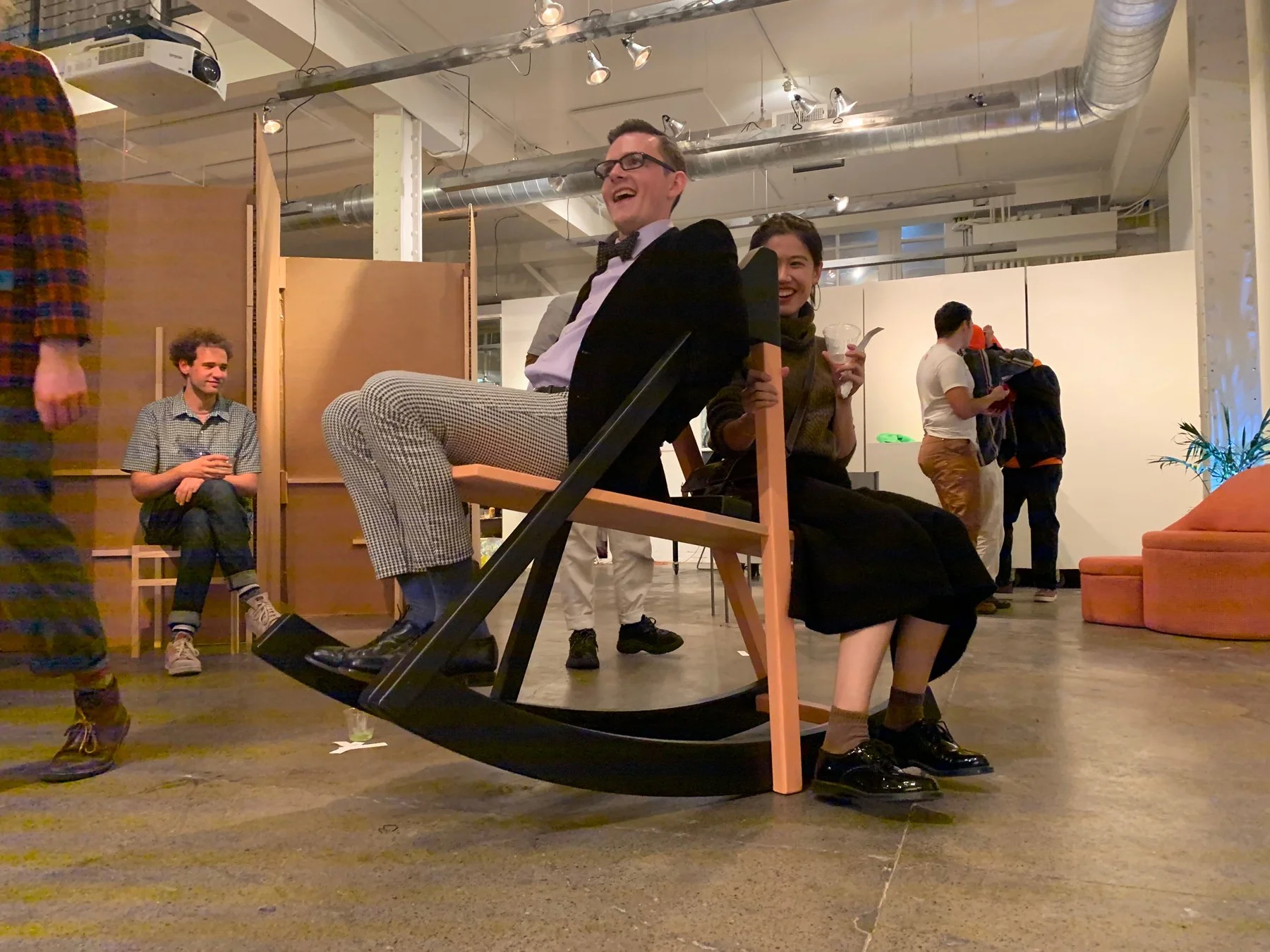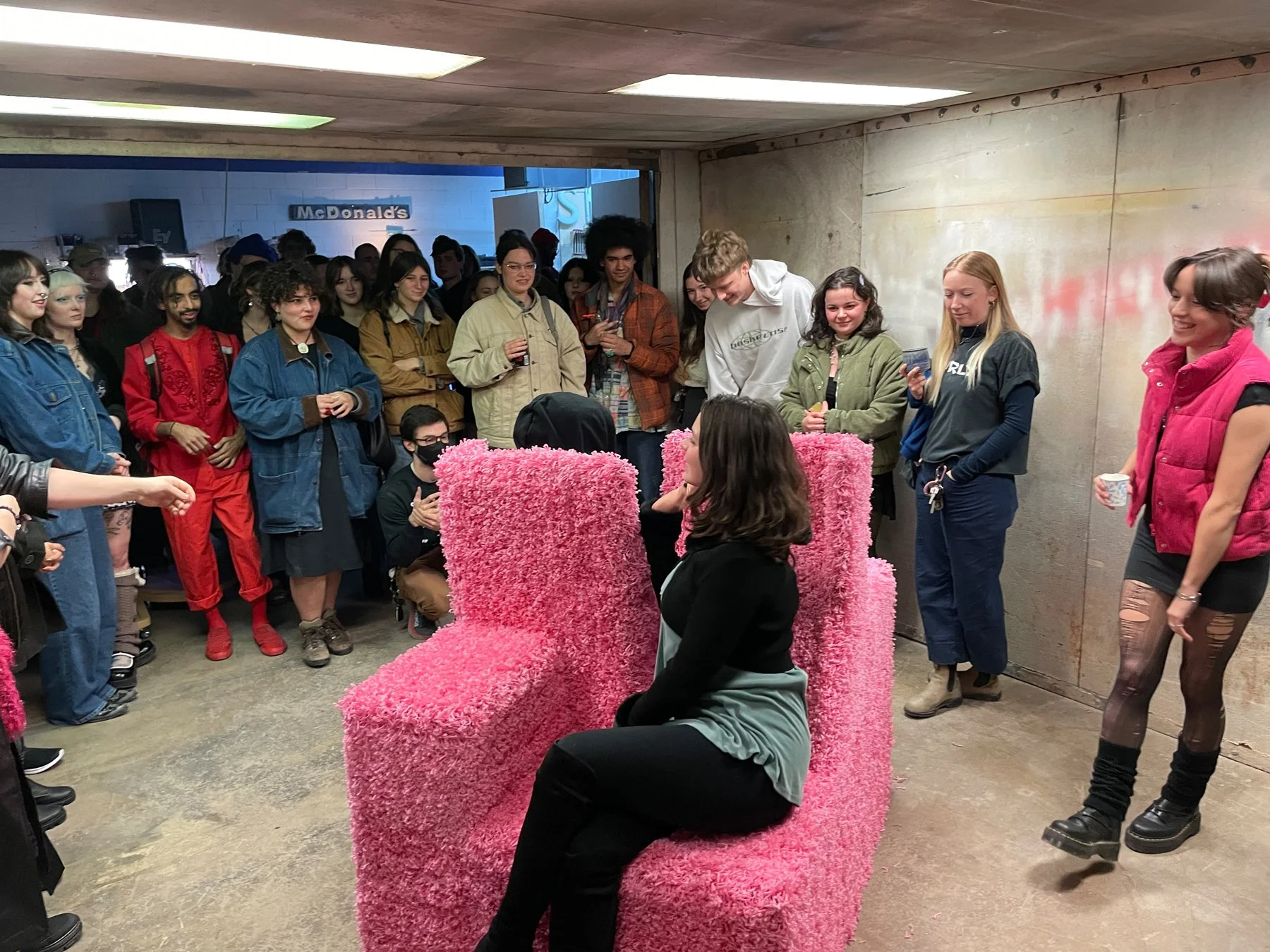WHY JOY?
I live and work in search of human connection, self-discovery, and joy. I am a humanist, but society can often feel overwhelming. When confronted with the horrors and absurdities of life, it is our shared humanity that helps us support one another and laugh instead of cry.
My work takes the form of chairs because they intrinsically draw people in and provide a platform for engagement. Growing up in southeast Georgia in the 1980s, I was far from exposure to and understanding of “real art,” and it is important to me that my work remain accessible to all. Everyone knows to sit when they see a chair. Because of this reliance on human interaction, it is important that the objects manifest a sense of “realness.”
The pieces are often autobiographical and tell the story of my life. Before the pandemic, I began making work about the effects of social media on myself and my artistic practice with the piece The Hideous Beautiful New Reality. This series has continued with Virgin Windsor and Let Them Eat Cake. While personal, this work also speaks to larger social issues, using the chair as a way to explore the complex effects of social media. It led to a series of events and classes titled SRSLY RUOK IRL (seriously, are you okay in real life) that foster human connection through making and experiencing objects that promote social engagement. These events work to combat the negative impacts of reduced face-to-face interaction and the decline in social skills that have resulted from our increasingly digital lives.
Henry Miller
"When the whole human race is rocking with laughter, laughing so hard that it hurts, I mean everybody then has his foot on the path. …Nobody can persuade you at that moment to take a gun and kill your enemy; neither can anybody persuade you to open a fat tome containing the metaphysical truths of the world and read it. If you know what freedom means, absolute freedom and not a relative freedom, then you must recognize that this is the nearest to it you will ever get. If I am against the condition of the world it is not because I am a moralist - it is because I want to laugh more. I don't say that God is one grand laugh: I say that you've got to laugh hard before you can get anywhere near God. My whole aim in life is to get nearer to God, that is, to get nearer to myself. That's why it doesn't matter to me what road I take."
Bernard Schilling
“In tragedy once more man is great but is destroyed nevertheless. In comedy man is weak and small and inconsistent, but is redeemed by reminders of his greatness; his weakness is tolerated because he is man after all, and has what strength there is, within himself. If man is not great then nothing is, although it deals with things that show man as less than he should be."
E. B. White
“All that I hope to say in books, all that I ever hope to say, is that I love the world.”
“If the world were merely seductive, that would be easy. If it were merely challenging, that would be no problem. But I arise in the morning torn between a desire to improve the world and a desire to enjoy the world. This makes it hard to plan the day.”
“Humor can be dissected, as a frog can, but the thing dies in the process and the innards are discouraging to any but the pure scientific mind.”






